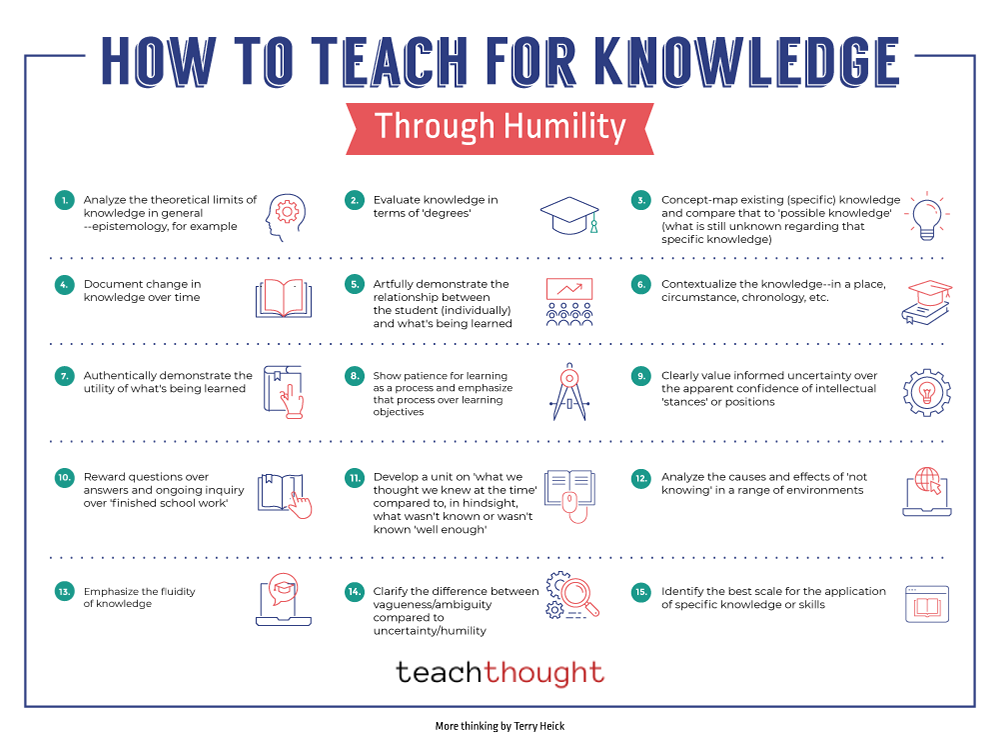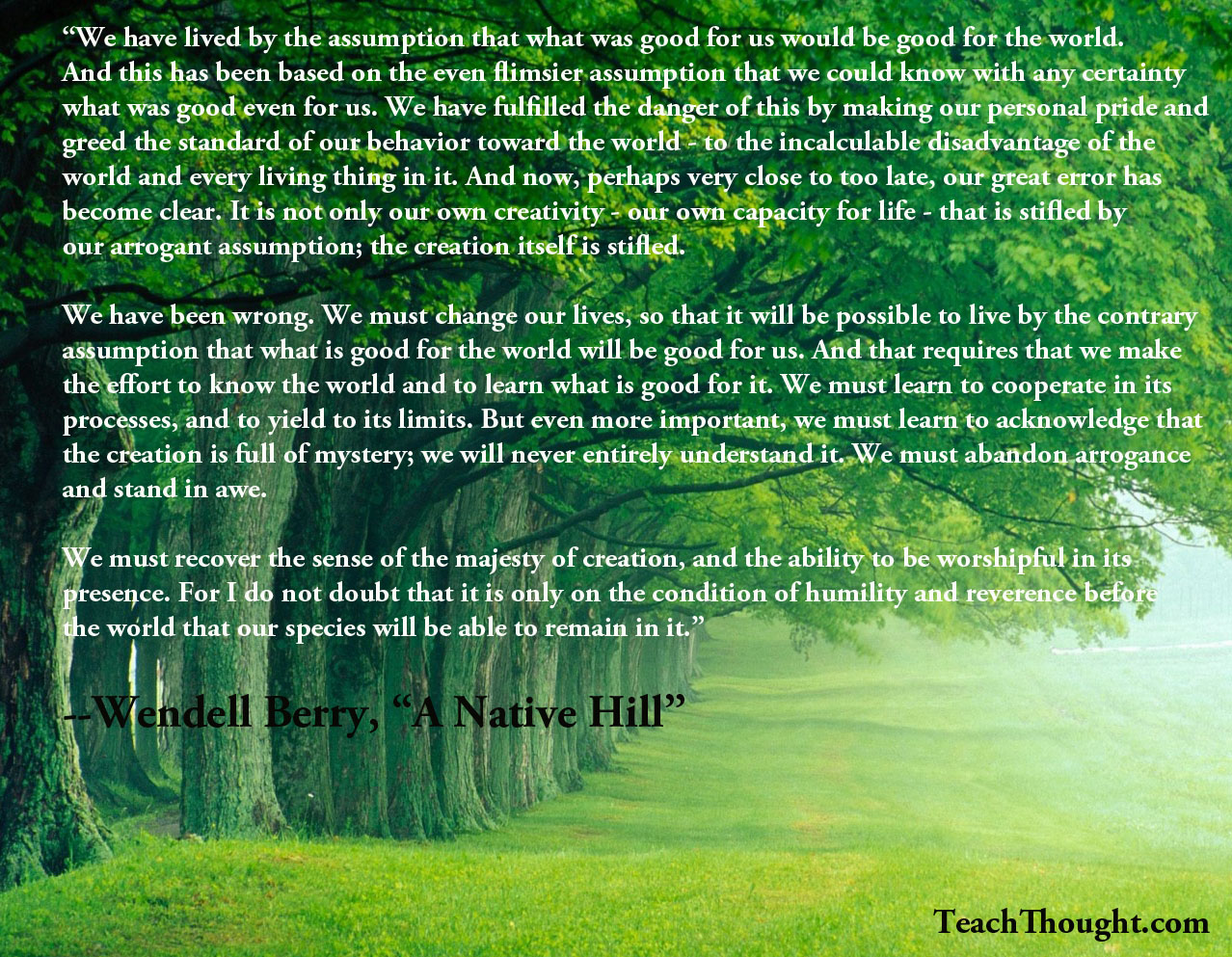

by Terry Heick
Humbleness is an intriguing starting factor for learning.
In an age of media that is electronic, social, chopped up, and constantly recirculated, the obstacle is no more accessibility yet the quality of access– and the reflex to then evaluate uncertainty and “truth.”
Discernment.
On ‘Knowing’
There is an appealing and warped sense of “knowing” that can cause a loss of reverence and also privilege to “know things.” If absolutely nothing else, contemporary innovation access (in much of the world) has replaced subtlety with spectacle, and process with accessibility.
A mind that is effectively watchful is likewise effectively humble. In A Native Hill , Wendell Berry indicates humility and limits. Standing in the face of all that is unknown can either be overwhelming– or illuminating. Exactly how would it alter the knowing process to begin with a tone of humbleness?
Humility is the core of important reasoning. It states, ‘I do not understand enough to have an enlightened point of view’ or ‘Allow’s find out to lower uncertainty.’
To be independent in your own expertise, and the limits of that knowledge? To clarify what can be known, and what can not? To be able to match your understanding with a genuine need to know– work that naturally strengthens essential assuming and sustained inquiry
What This Looks Like In a Class
- Evaluate the limits of understanding in ordinary terms (a straightforward introduction to epistemology).
- Review knowledge in levels (e.g., particular, potential, feasible, unlikely).
- Concept-map what is currently comprehended regarding a specific topic and contrast it to unanswered inquiries.
- Record just how knowledge adjustments over time (individual discovering logs and historical snapshots).
- Demonstrate how each pupil’s point of view shapes their connection to what’s being learned.
- Contextualize understanding– area, condition, chronology, stakeholders.
- Demonstrate authentic energy: where and how this knowledge is used outside school.
- Program patience for learning as a process and highlight that process alongside goals.
- Plainly value enlightened unpredictability over the confidence of fast final thoughts.
- Award ongoing inquiries and follow-up investigations greater than “completed” responses.
- Create an unit on “what we thought we knew after that” versus what knowledge shows we missed out on.
- Analyze causes and effects of “not understanding” in science, background, civic life, or everyday decisions.
- Highlight the liquid, advancing nature of knowledge.
- Differentiate vagueness/ambiguity (lack of quality) from uncertainty/humility (awareness of restrictions).
- Determine the most effective scale for applying certain expertise or skills (person, neighborhood, systemic).
Research Note
Research study shows that individuals that practice intellectual humbleness– agreeing to confess what they do not understand– are much more open up to learning and less likely to hold on to incorrect certainty.
Resource: Leary, M. R., Diebels, K. J., Davisson, E. K., et al. (2017 Cognitive and social attributes of intellectual humility Personality and Social Psychology Publication, 43 (6, 793– 813
Literary Example
Berry, W. (1969 “An Indigenous Hill,” in The Long-Legged Home New York: Harcourt.
This idea might appear abstract and even out of place in significantly “research-based” and “data-driven” systems of knowing. But that is part of its worth: it aids trainees see understanding not as fixed, however as a living procedure they can join with treatment, proof, and humility.
Training For Knowledge, Knowing Through Humbleness

